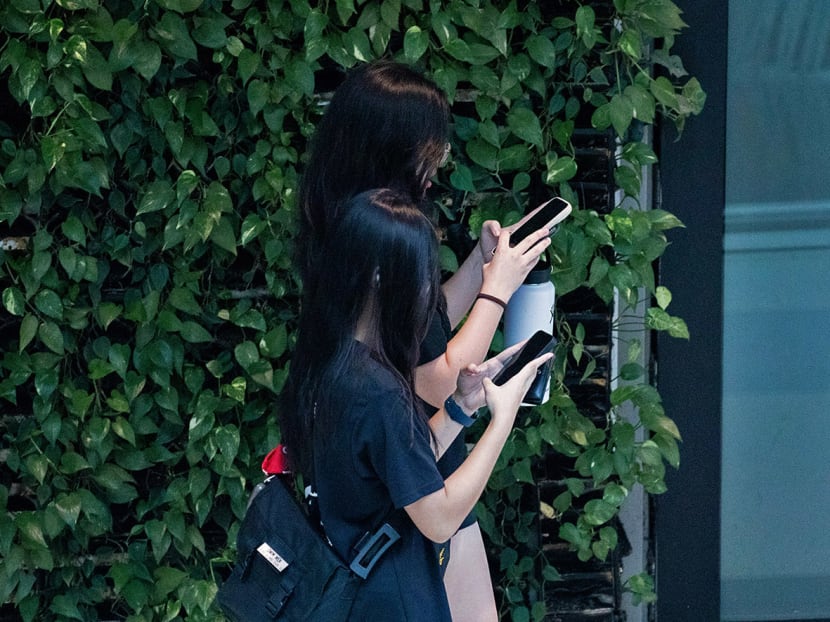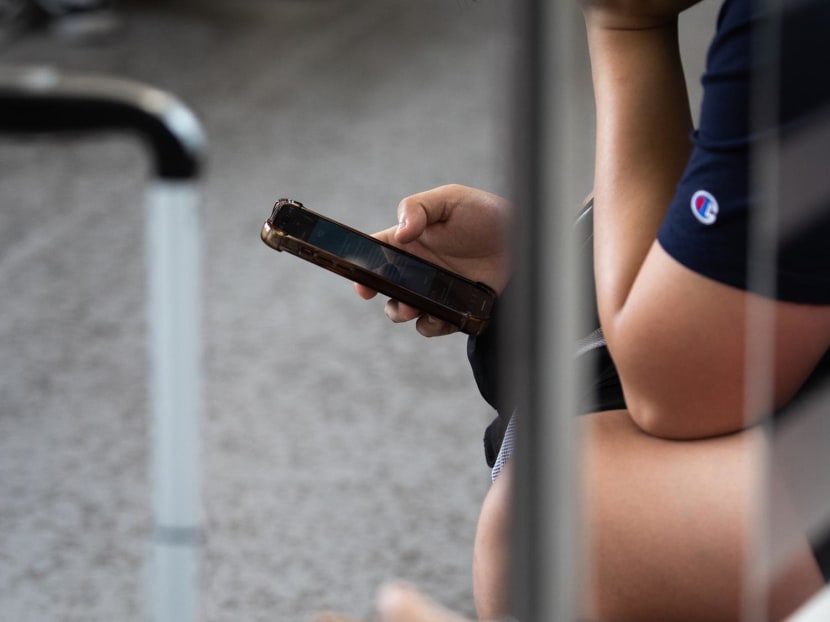The Big Read in short: Why youths prefer texting to phone calls
SINGAPORE — Before making a phone call, 26-year-old Nivani Elangovan would prepare herself by mentally mapping out what could happen during the tele-conversation and jotting down pointers on post-it notes for reference.

The texting preference by Gen Z is not a recent phenomenon; their millennial counterparts — those aged between 27 and 42 — have been doing so as early as 2009, sociologists told TODAY.

This audio is AI-generated.
Each week, TODAY’s long-running Big Read series delves into the trends and issues that matter. This week, we look at why youths prefer to text than to get on a phone call, both at work and socially. This is a shortened version of the full feature, which can be found here.
- Youths interviewed by TODAY say they prefer texting to phone calls for both social and workplace communication
- They say this is because calls can be nerve-racking, and they also perceive texting to be clearer, among other reasons
- Gen Zers and millennials also share how they decide whether to text or call as well as when to use emojis and abbreviations
- Some parents and employers lament that the youths' preference for texting can cause communication problems
- Sociologists also caution that certain social cues may get lost over text, but add that concerns over the negative effects of texting are overblown
SINGAPORE — Before making a phone call, 26-year-old Nivani Elangovan would prepare herself by mentally mapping out what could happen during the tele-conversation and jotting down pointers on post-it notes for reference.
Typing a phone number into her seldom-used call app on her handphone is an anxiety-inducing task, let alone having to hold a conversation.
“I hate phone calls… because I’m a lot more anxious about things that are uncertain. I like having structure and being as prepared as I can,” she told TODAY over the phone.
“Over email or text messages, at least it's in writing and I have time to think about how to reply and what I want to say. When over the phone, there’s so much uncertainty about what could play out.
“Even if I do have to make a phone call, I will take a post-it note and write down all the different points I need to cover during my phone call,” Ms Elangovan said.
Ms Elangovan’s case of “phone anxiety” is not uncommon among digital natives who have grown up amid computers and the internet.
In Australia, a survey last year of more than 1,000 Gen Zers aged 18 to 26 found that only one in 10 prefer to talk to family and friends via a phone call.
About 49 per cent said speaking over the phone made them anxious, while six in 10 dreaded making or accepting a phone call, according to the survey conducted by Australia’s telecommunications company More Telecom in May 2023.
This texting preference by Gen Z is not a recent phenomenon; their millennial counterparts — those aged between 27 and 42 — have been doing so as early as 2009, sociologists told TODAY.
According to a survey by the Washington-based Pew Research Centre released in 2012, the typical American teen aged 12 to 17 was sending and receiving 60 messages in 2011, up from 50 in 2009.
The same survey found that 26 per cent of American teens were calling their friends in 2011 using their handphones, down from 38 per cent in 2009.
In Singapore, 12 youths aged 35 and under told TODAY that texting is the main mode of communication for them, even though three of them still prefer calling.
WHY IT MATTERS
TODAY’s interviews with those in their 40s and 50s point to a generational split when it comes to texting and calling.
“Texting on the computer is fine since the screen is bigger and it's easier to read. But on the phone with the small keyboard, it can be quite difficult,” said Ms Angie Neo, 59, an administrative executive with a real estate firm.
“Calling is just more straightforward since you just say what you need and get the message across,” she added.
The way older people text also differs from youths, such as using fewer abbreviations and taking no offence when their messages are "blue ticked", or left read but unreplied.
For youths, sending a message and getting a signal through two blue ticks indicates that it has been read by the recipient. Thus, for them, a non response is a rude sign, suggesting that they are being ignored.
For older text recipients, this is a non-problem as the blue ticks are simply an acknowledgment that the message has been read.
Mr Edwin Yeo, 56, general manager of public relationship firm SPRG Singapore, added that youth's preference for texting even at the workplace can have its downsides.
"Calls can be more convenient when brainstorming and making clarifications... without misunderstanding as you can hear their tone of voice, unlike text.”
THE BIG PICTURE
Youths who prefer texting cite convenience of replying anywhere and anytime and having the time to think of a reply as among some of the benefits.
They note that messaging applications also have unique features that make communication more engaging, such as “video bubbles” which allow youths to send short videos of themselves.
Even among youngsters who prefer phone calls, texting is still the primary means of communicating.

Eighteen-year-old Shayna Choo said she spends roughly two hours weekly calling her boyfriend, but at least eight hours texting her friends during a typical week.
“It’s much easier to catch up with them over call, and you feel closer when you hear their voice,” said the second-year business student at Ngee Ann Polytechnic (NP).
“But honestly, I text much more than I call (my friends) because my close friends and I have our own lives and it’s hard to find a common time."
Like other youths, Ms Choo’s calls are reserved for close friends and family members. And if she were to call, these are often scheduled unless it is for something she considers urgent.
If the call is not scheduled, youths told TODAY that they think twice before picking up.
“If it’s a close friend, I would worry about what's going on and pick up the call (assuming) it’s something urgent. If it's someone I’m not close to, I’ll question why before picking up or might text back asking why they are calling,” said Ms Tay Xiu Qin, 18, a second-year banking and finance student at NP.
Youths told TODAY there are several nuances when texting that help them derive social cues. This includes how they type, the type of emoji used and the way they express their laughter over text.
In the workplace, their text messages are slightly more formal, as they type without abbreviations. They also give their messages a second read to fix any grammatical errors before sending it out.
BOTTOM LINE
Dr Carol Soon, principal research fellow at the Institute of Policy Studies, said Gen Zers' preference for texting is “unsurprising” as several studies have shown that millennials have similar preferences.
Texting provides youths with more control over their schedules as they can communicate whenever they want, allows them to multi-task and avoid small talk, she noted.
“This reason also accounts for why people from other generations are also veering to texting, with phone calls used for urgent communications or speaking with elderly members in the family,” said Dr Soon.

Associate Professor Tan Ern Ser, a sociologist at the National University of Singapore, noted there are some negatives in texting.
For one thing, youths’ reliance on texting might mean more misunderstandings as they lose social cues such as facial expressions, and possibly missing out on learning and practising social interaction skills.
“To me, another negative of only texting is when one misses an emergency call from someone who has no time to write a text, is incapable of texting — such as a senior who is neither literate, nor able to use the text features of the smartphone — or have access to only a landline at home,” he said.
Dr Andrew Yee, an assistant professor at the Singapore University of Technology and Design, added that problems may also arise if conversation partners have different preferences of communication.
“For example, if my co-worker prefers speaking on the phone, they may find my texting or emailing very impersonal, which may lead to inefficiencies in communication,” he said.
Despite the pitfalls, Dr Yee said he does not view the new forms of communication as problematic.
“As long as the purposes of communication, such as building relationships and conveying meaning, are satisfactorily achieved, I am not sure if we need to worry too much about it,” he said.










